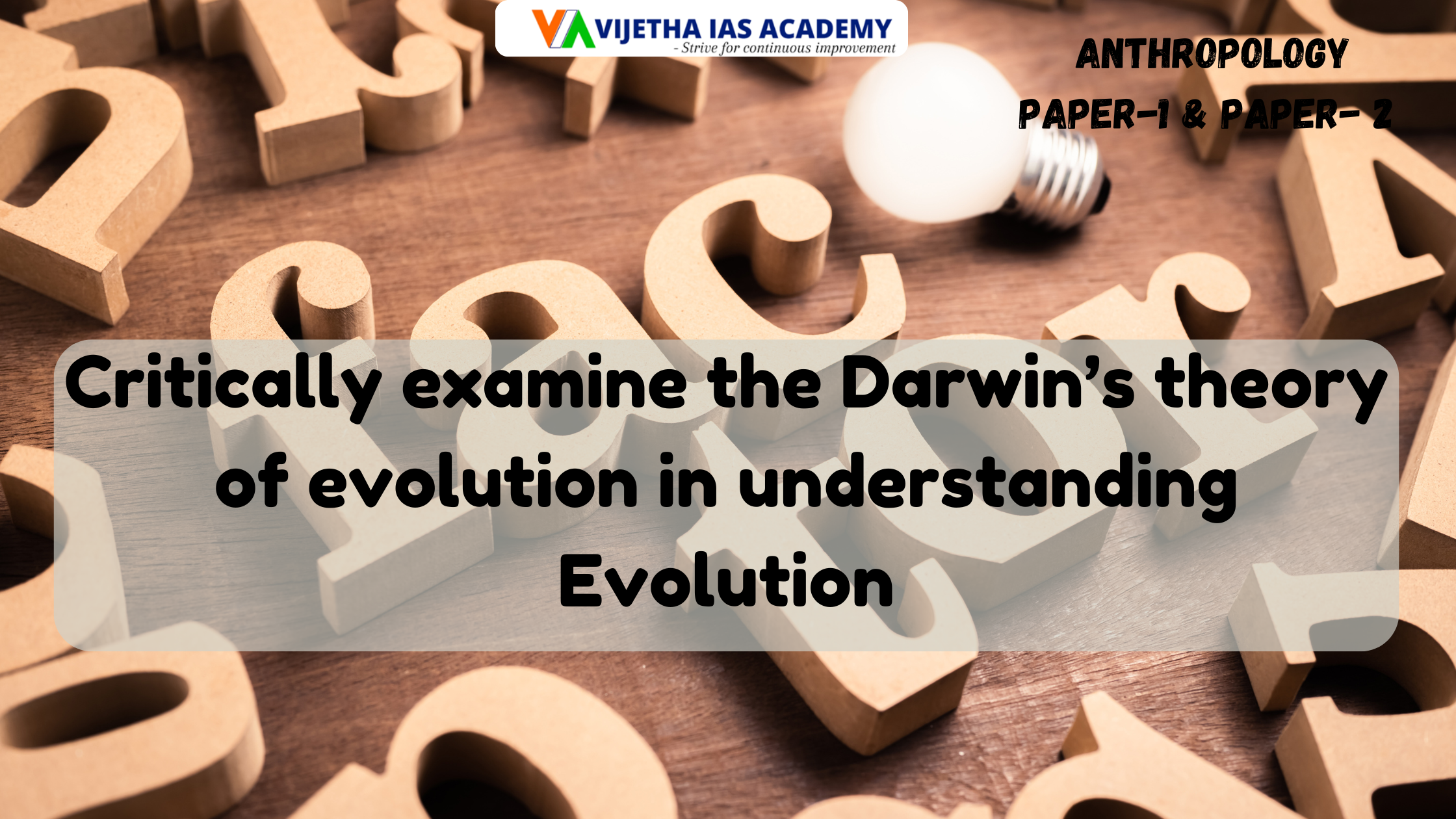
Introduction
Charles Darwin’s theory of evolution, articulated in "On the Origin of Species" (1859), fundamentally transformed the understanding of biological evolution. Darwin proposed the concept of natural selection as the primary mechanism driving evolution, a theory that remains central to evolutionary biology. This answer critically examines Darwin’s theory, evaluating its contributions and limitations in the context of modern evolutionary science.
Main Body
1. Darwin’s Theory of Evolution
- Natural Selection: Darwin's theory posits that species evolve over time through a process of natural selection. Organisms with traits better suited to their environment are more likely to survive and reproduce, passing these advantageous traits to the next generation. This process leads to gradual adaptation and speciation.
- Variation and Heredity: Darwin observed that individuals within a species exhibit variation, and these variations are heritable. This variability provides the raw material for natural selection, as advantageous traits become more common in the population over successive generations.
2. Contributions of Darwin’s Theory
- Foundation of Modern Evolutionary Biology: Darwin’s ideas provided a scientific framework for understanding the diversity of life. His theory introduced a systematic method to study evolutionary processes and established the concept of common descent, which suggests that all organisms share a common ancestor.
- Empirical Evidence: Darwin’s theory was supported by extensive observations from his voyage on HMS Beagle, including the diverse finch species of the Galápagos Islands. These observations highlighted the role of environmental pressures in shaping species traits.
3. Criticisms and Limitations
- Lack of Genetic Mechanism: Darwin’s theory was developed before the discovery of Mendelian genetics and the mechanisms of inheritance. As a result, Darwin could not explain the genetic basis of variation, a gap that was later filled by the integration of genetics with evolutionary theory (the Modern Synthesis).
- Role of Other Evolutionary Processes: Modern evolutionary biology acknowledges that natural selection is not the only mechanism of evolution. Genetic drift, gene flow, and mutation also play significant roles in evolutionary processes. Darwin’s theory primarily emphasized natural selection, which sometimes oversimplifies the complexity of evolutionary dynamics.
- Punctuated Equilibria: The theory of punctuated equilibria, proposed by Stephen Jay Gould and Niles Eldredge, challenges Darwin’s idea of gradual, continuous evolution. It suggests that species often experience long periods of stability interrupted by short, rapid changes, a concept not fully addressed by Darwin.
Conclusion
Darwin’s theory of evolution, with its central concept of natural selection, laid the groundwork for modern evolutionary biology and provided a robust framework for understanding how species adapt and diversify. While the theory has been instrumental in advancing the field, it has limitations, particularly regarding genetic mechanisms and the complexity of evolutionary processes. The integration of genetics, along with the acknowledgment of additional evolutionary mechanisms and concepts such as punctuated equilibria, has refined and expanded upon Darwin’s initial ideas. Nevertheless, Darwin’s contributions remain pivotal in the study of evolution, highlighting the ongoing evolution of scientific understanding in the field.
